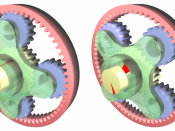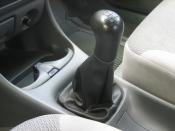The manual gearbox is an often misunderstood beast. Few of us actually understand how it works but most of us think we do.
Here's what really happens.
Between the engine and the road wheels there are two major mechanical devices: the clutch and the gearbox.
The purpose of the gearbox is to allow the engine to provide power to the wheels without having to turn as often as the wheels do. To provide a wide range of speeds for engine revs we employ a number of different gears (at least four in a manual). This means that at 2000 engine rpm we could be travelling at 5,20,40,60 mph depending on gear ratios and engine load.
We could use just one gear but this wouldn't allow us to make full use of the engine. For instance, to move off quickly we have a first gear. This gear will run out of steam pretty quickly as it gets beyond the engines favourite range of revs.
On the other hand, fourth gear will allow the highest road speed for any set of engine revs but is to slow for pulling off.
To allow us to make quick progress and keep the engine within a comfortable rev range we use as many gears as possible, upto the point of too many gears would result in lot's of changes.
So, if the engine works best between a range of 1500 to 4500 revs then each gear allows you to rev in that range while increasing the road speed.
The difference between the engine revs and the resulting road speed is called the gear ratio. A direct 1:1 ratio allows the car's wheels to turn as often as the engine does (final drive or fourth gear), while a 4:1 ratio will result in one turn of...


